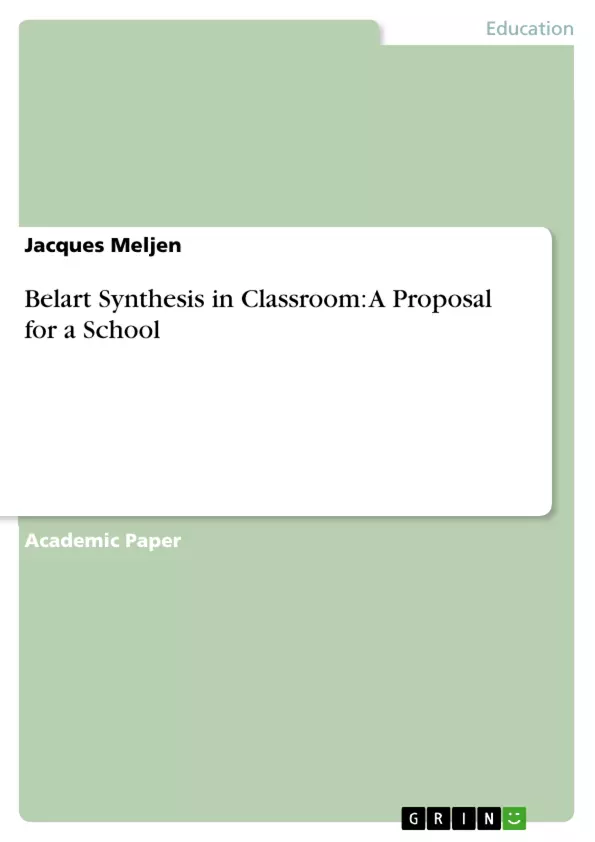In recent years, societies worldwide have witnessed a revolution in technology in every field of knowledge, including the education sector. Technology has become an essential component of life, being used by almost everyone with children of schooling age not left behind. In the education arena, the use of technology has been observed to increase learning opportunities as teaching applications and platforms have been developed to disseminate knowledge to students. As a result, several benefits are emanating from technology utilization in classrooms, such as ease of communication. However, the students using technology have been observed to indulge in other online activities that lead to abusive utilization of service. Technological misuse among learners and teenagers, in general, has been reported in the violation of privacy, lack of ethics when interacting online, diminishing online reputation for this age group, and cyberbullying. In other words, most students do not seem to understand the dangers associated with the irrational use of technology, which lead to cyberbullying and other atrocities. Consequently, without proper guidance, learners can easily carry these habits into the classrooms that use technology to deliver learning.
Inhaltsverzeichnis (Table of Contents)
- Belart Synthesis in Classroom: A Proposal for Ecole XY School
- The Description of Belart Synthesis
- Digital Citizenship
- Digital Empathy
- Expressive Arts Therapy (EXA)
- Typical Application of Belart Synthesis
- Benefits of Belart Synthesis for Ecole XY
- Implementation of Belart Synthesis
- The Belart Synthesis Curriculum
- Teacher Training and Support
- Assessment and Evaluation
- Anticipated Outcomes
- Improved Digital Citizenship and Empathy
- Enhanced Creativity and Innovation
- Increased Student Engagement and Motivation
- Conclusion
Zielsetzung und Themenschwerpunkte (Objectives and Key Themes)
This project proposes a framework called Belart Synthesis that aims to teach students responsible, empathic, and creative use of technology in the classroom. The framework incorporates digital citizenship, digital empathy, and expressive arts therapy, and will be evaluated through application in Ecole XY, a school with a strong technological infrastructure.
- Responsible Use of Technology
- Digital Empathy and Online Interaction
- Creative Use of Technology
- Expressive Arts Therapy and Digital Arts
- Developing Digital Citizens and Responsible Learners
Zusammenfassung der Kapitel (Chapter Summaries)
- The Description of Belart Synthesis: This chapter defines the core concepts of Belart Synthesis, focusing on digital citizenship, digital empathy, and expressive arts therapy. It examines the meaning and importance of each component within the framework.
- Typical Application of Belart Synthesis: This section outlines the practical application of Belart Synthesis in a classroom setting, emphasizing the integration of digital citizenship, digital empathy, and expressive arts therapy into learning activities.
- Benefits of Belart Synthesis for Ecole XY: This chapter explores the potential benefits of Belart Synthesis for Ecole XY, a school with a strong technological infrastructure. It highlights how the framework can enhance student learning, engagement, and digital literacy.
- Implementation of Belart Synthesis: This section discusses the practical implementation of Belart Synthesis, covering aspects like curriculum development, teacher training, and assessment strategies.
- Anticipated Outcomes: This chapter anticipates the potential outcomes of implementing Belart Synthesis in Ecole XY, including improved digital citizenship, enhanced creativity, and increased student engagement.
Schlüsselwörter (Keywords)
The primary keywords and focus topics of this work include Belart Synthesis, digital citizenship, digital empathy, expressive arts therapy, responsible technology use, creative learning, design thinking, and education in the digital age. The project investigates the potential of Belart Synthesis as a pedagogical framework for fostering digital literacy, ethical online behavior, and creative thinking in students.
- Quote paper
- Jacques Meljen (Author), 2021, Belart Synthesis in Classroom: A Proposal for a School, Munich, GRIN Verlag, https://www.grin.com/document/1157005



